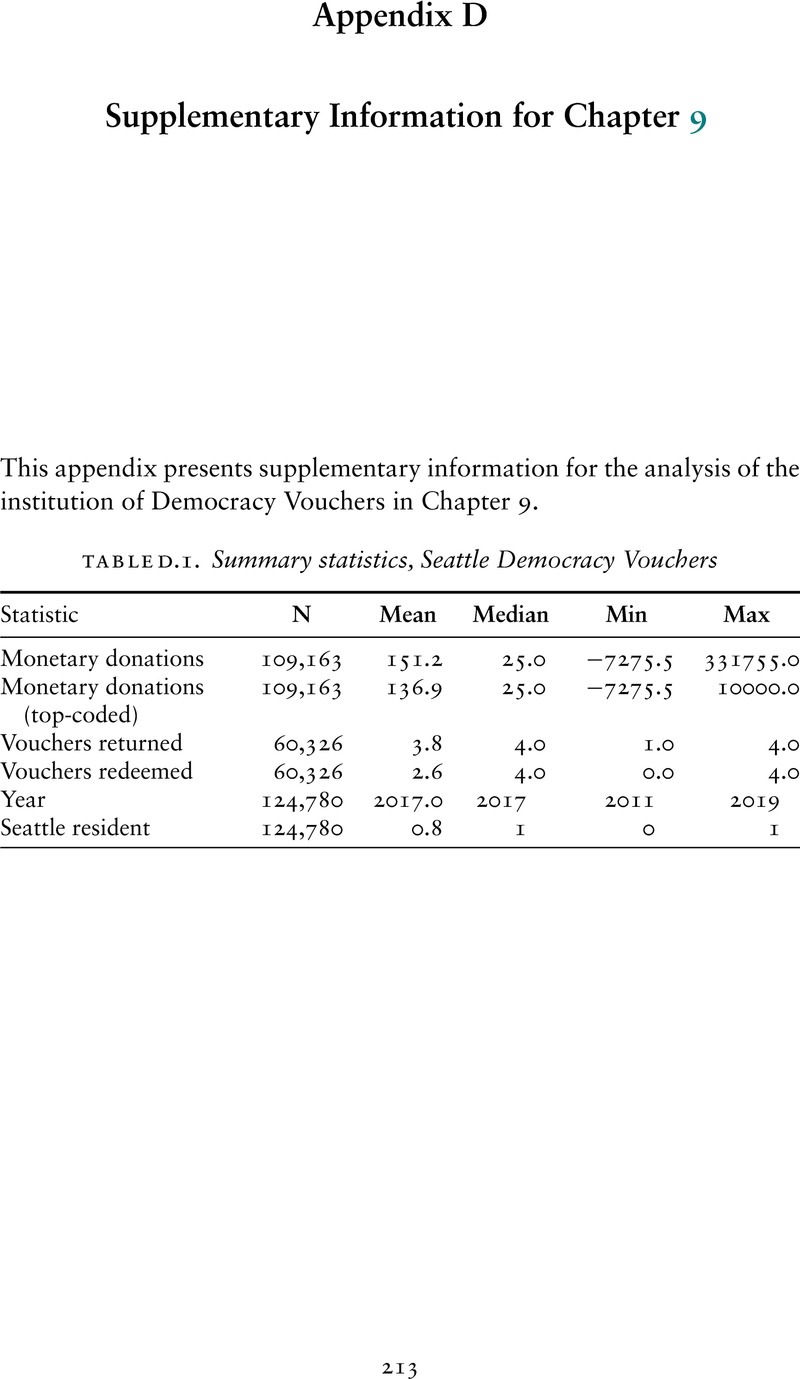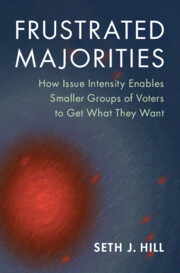Book contents
- Frontmatter
- Contents
- Figures
- Tables
- Theorems
- Acknowledgments
- Part I Frustrated Majorities, Issue Intensity, and Political Action
- Part II Argument: an Intensity Theory of Electoral Competition
- Part III Evidence: Empirical Patterns and Intensity Theory
- Part IV Conclusions
- Part V Appendices
- Appendix A Mathematical Model of Intensity and Electoral Competition
- Appendix B Formalities of Chapter 5
- Appendix C Supplementary Information for Chapter 8
- Appendix D Supplementary Information for Chapter 9
- Appendix E Supplementary Information for Chapter 10
- Bibliography
- Index
- Other books in the series
Appendix D - Supplementary Information for Chapter 9
from Part V - Appendices
Published online by Cambridge University Press: 15 September 2022
- Frontmatter
- Contents
- Figures
- Tables
- Theorems
- Acknowledgments
- Part I Frustrated Majorities, Issue Intensity, and Political Action
- Part II Argument: an Intensity Theory of Electoral Competition
- Part III Evidence: Empirical Patterns and Intensity Theory
- Part IV Conclusions
- Part V Appendices
- Appendix A Mathematical Model of Intensity and Electoral Competition
- Appendix B Formalities of Chapter 5
- Appendix C Supplementary Information for Chapter 8
- Appendix D Supplementary Information for Chapter 9
- Appendix E Supplementary Information for Chapter 10
- Bibliography
- Index
- Other books in the series
Summary

- Type
- Chapter
- Information
- Frustrated MajoritiesHow Issue Intensity Enables Smaller Groups of Voters to Get What They Want, pp. 213 - 214Publisher: Cambridge University PressPrint publication year: 2022

